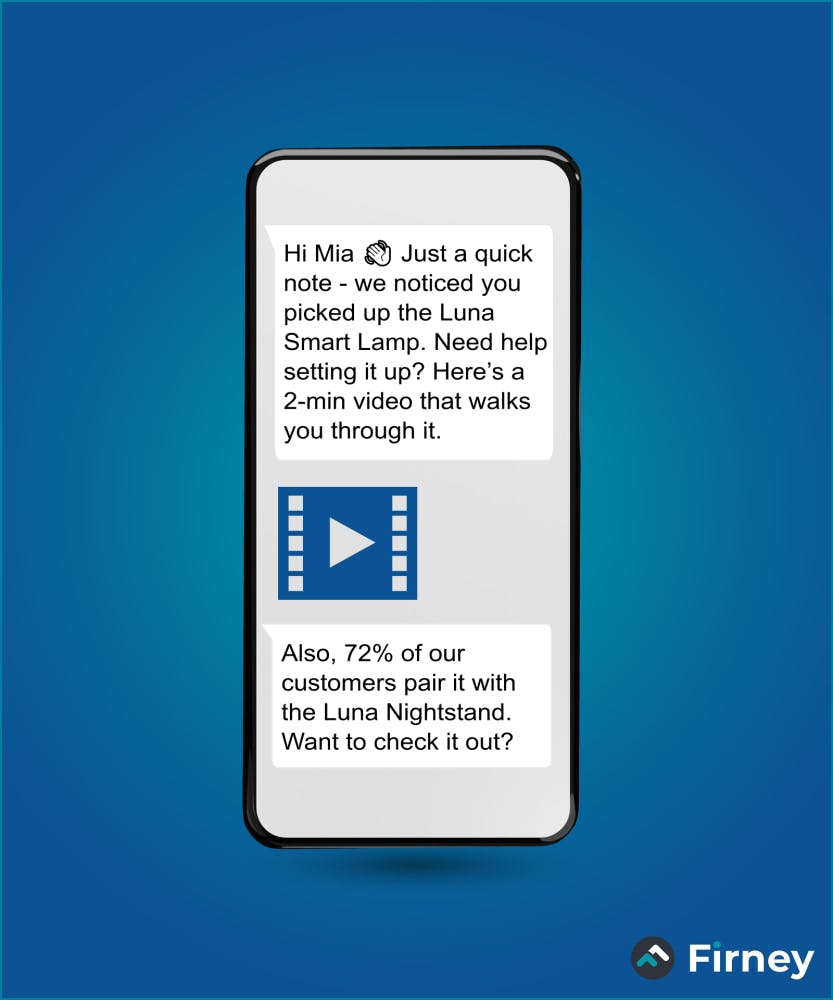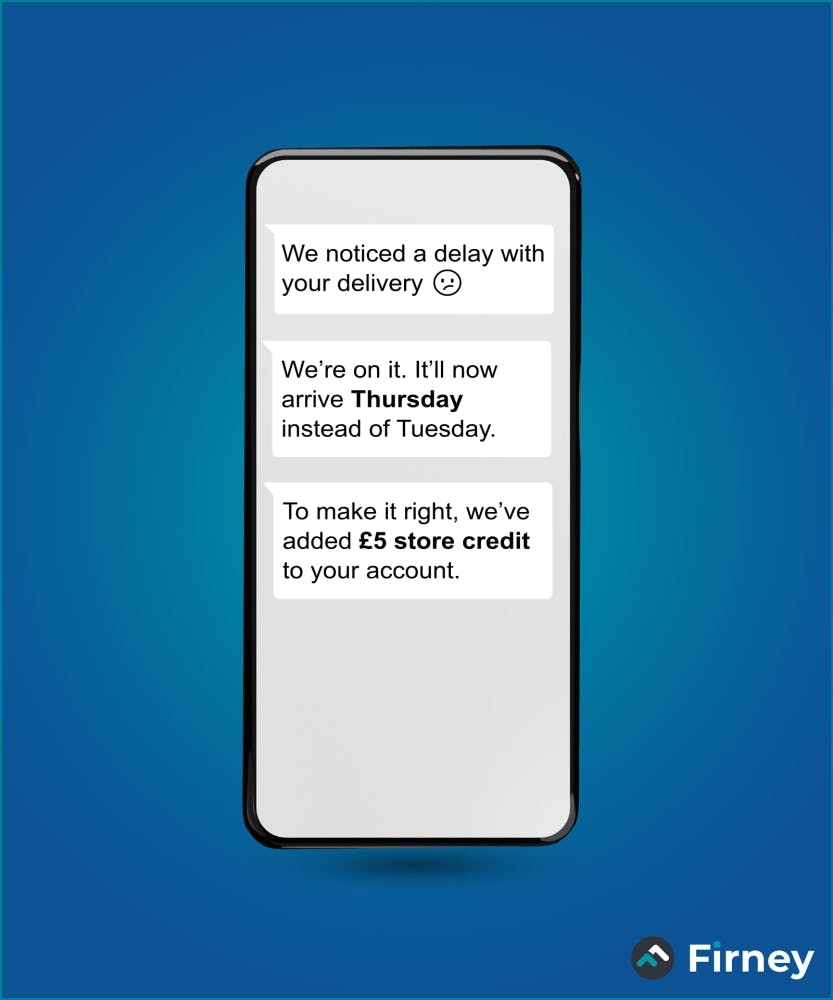The CLTV Revolution: How UK Retail CMOs are Doubling Down on Loyalty with Conversational AI
As acquisition costs soar, retention has become retail’s new growth engine. This article explores how CMOs are using conversational AI to strengthen loyalty, resolve issues proactively, and deliver personalised experiences that boost Customer Lifetime Value (CLTV). Learn how dialogue-driven relationships are reshaping customer retention strategies.
Over the past decade, the Customer Acquisition Cost (CAC) has seen a rise of more than 200%. It appears to be a new reality for two-thirds of retailers that have experienced the increase.
This is not just a minor fluctuation, but a C-suite-level issue: a challenge caused by the changes in digital privacy laws, customer spending behaviour, as well as a surge in digital marketing costs.
Additionally, consumers today have changed. They want to build a meaningful connection with the brand they choose to buy from. They don't want to be just another number in the customer base. And who can blame them?
This is why simply awarding them loyalty points for purchases is no longer enough to build a personalised customer journey. Transactional loyalty does not make consumers feel part of the brand, nor does it prevent churn when a competitor offers a slightly better price.
The real growth opportunity now lies in building personal relationships: anticipating customer needs, guiding their journey, and turning one-off buyers into long-term advocates. In other words, your existing customer base is your most valuable growth engine.
Having worked with retailers from every part of the UK, we’ve seen first-hand how custom-built conversational AI can make this happen. Designed specifically for each brand, it deepens relationships, strengthens loyalty, and makes the customer journey seamless.
That’s why retail CMOs are increasingly turning to conversational AI, and why we believe we’re in the middle of a quiet revolution in Customer Lifetime Value (CLTV).
We’ve seen these strategies work in practice, and we want to share how you can apply them to your own business.
Strategy 1: Loyalty-Building Dialogue
The initial transaction shouldn’t be seen as the ultimate victory. It is, instead, a critical opportunity for building a relationship with the customer. CMOs must focus on continuing the interaction with the customer even after the checkout process, transforming a momentary purchase into a long-term interaction.
How Conversational AI Does It
Beyond traditional payment and shipping notifications consumers receive, conversational AI initiates a personal dialogue. Using the consumer’s browsing and purchase history, it offers additional useful and relevant content to continue the interaction initiated by the purchase.
For example, it may help a customer master new tools and devices by providing user manuals or how-to videos, or offer styling tips for a newly purchased outfit. It can also make personalised recommendations for complementary items, directly increasing the chances of a repeat purchase: a laptop bag to accompany the laptop purchase, or a pair of shoes complementing the newly purchased piece of clothing.
How Your Brand Benefits from It
These interactions will make the customer feel understood and supported, giving them a reason to trust the brand and return to it, improving repeat purchase rates and Average Order Value (AOV), which in turn ultimately affects CLTV.
How CMOs and Marketing Teams Benefit
For marketing leaders, this means measurable ROI without added acquisition costs. Instead of burning budget on constantly chasing new customers, your team can demonstrate growth by improving retention KPIs, building stronger cohorts, and proving to the board that your strategy delivers profitable growth rather than expensive churn cycles.
Strategy 2: Integration with Loyalty Programmes
Static loyalty programmes do make it easier for a customer to make a repeat purchase, but they do not affect brand loyalty in a competitive market. However, traditional loyalty programmes make a sound foundation for a more complex and personalised customer experience.
How Conversational AI Does It
Conversational AI steps into the loyalty points story as an assistant and an activator, whether it's helping users understand the programme’s rules, or offering personalised recommendations on how to maximise the points and redeem them.
It can either act after a customer’s inquiry, or offer information and promote action on its own, again based on the customer's prior actions and purchases. While the customer may often forget to engage with the loyalty program, AI can proactively inform them: “You are only 15 points away from the reward”, and then recommend an informed purchase to help them redeem the reward. It can also provide intelligent answers to any inquiries.
How Your Brand Benefits from It
Loyalty points shift from a static add-on to a dynamic, personal reason for a customer to re-engage. This increases programme participation, boosts engagement rates, and drives incremental purchases.
How CMOs and Marketing Teams Benefit
For marketers, this turns a traditional loyalty programme into a data-rich engagement channel. Instead of being another cost centre, it becomes a source of insights and incremental revenue. CMOs can show the board a clear link between loyalty initiatives and repeat sales, proving the loyalty budget is generating true business value.
Strategy 3: Proactive Issue Resolution
The competition in this sector is quite strong, which is why even a single poor customer service is no longer a minor issue, but a real threat to revenue. In fact, as much as 96% of customers will leave a brand after experiencing bad customer service. This transforms customer support and CX into a powerful retention strategy, with AI being proactively involved in solving issues.
How Conversational AI Does It
The greatest benefit of using AI in these scenarios is to anticipate and solve problems before they even occur, or at least before they escalate.
If AI detects a shipping delay, it can message the customer informing them that the retailer is aware of the problem, is working on resolving it, and perhaps even offer a small credit in return for the inconvenience. Such proactive actions transform a potentially negative experience into a memorable and positive one, with the customer feeling taken care of and valued.
What is more, if AI is integrated with retailers’ analytics or CRM platforms, it can also easily detect potentially problematic patterns, such as repeated issues for customers or their reduced engagement. This opens the door to acting even before the customer decides to leave.
How Your Brand Benefits from It
Proactively resolving problems prevents churn, transforms negative moments into positive ones, and strengthens long-term loyalty. This keeps customers engaged and preserves revenue that would otherwise be lost.
How CMOs and Marketing Teams Benefit
For marketing leaders, this is a direct way to defend the bottom line. Instead of losing valuable customers due to bad experiences (a silent drain on CLTV), proactive AI-driven service helps safeguard revenue streams. It also aligns the marketing department more closely with customer success, giving CMOs tangible proof points that their strategy reduces churn.
The Importance of AI for CLTV
The relentless pursuit of top-of-funnel growth is an expensive and unpredictable gamble, both for marketers responsible for their budgets as well as the company as a whole. The retailers we see thriving are those that treat their current customers as their biggest growth opportunity.
In this customer-centred scenario, CLTV becomes more than a static metric. It isn’t fixed; it changes with every interaction. And with the right conversational AI, those interactions become smarter, more personal, and more valuable, for both the customer and the business.
Conversational AI, which encompasses everything from chatbots and voice assistants to intelligent virtual agents, has become the most important tool in actively increasing CLTV. It turns interactions into revenue opportunities, but in a helpful and natural way.
Integrating conversational AI into your customer journey allows for a personalised experience that the modern customer seeks. It directly, and measurably:
- boosts retention,
- increases spending,
- and fosters the long-term loyalty
that is the very definition of a high customer lifetime value.
If you'd like to see how conversational AI could work for your business, feel free to contact us.








